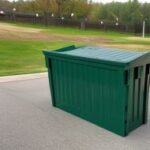What are the Essentials for Your Smart Garden?

Isn’t it wonderful to have fresh greens and garden vegetables on hand whenever they are wanted? It is also wonderful to have a garden to take care of. It is mentally rewarding as well as a treat for the body. Even without having a lot of outdoor space available, it is still possible to have a garden. A smart garden is easy to own, no matter the circumstances, and easy to sustain as part of any lifestyle.
What is a Smart Garden?
A smart garden is a hydroponic, indoor garden that is automated just like any smart home or office. These garden units take the guess work out of gardening and provide the freshest nutritious produce all year round. People love gardening indoors without the hassle of weather or pests.
The best indoor gardening units are designed to take up very little space while still allowing for multiple plants to be grown at once. Superior smart gardens use vertical growing technology and include growing shelves to increase capacity without increasing the footprint.
These innovative growing units use specialized sensors and cameras to monitor the progress of each plant. As the plant grows, the nutrient/water solution can be adjusted automatically and the lighting can be customized in order for the plants to get the optimum growing environment.
Save Water with Hydroponics
Most indoor gardening is done with hydroponic methods, which means that the smart garden uses its own watering system. The plants still need moisture, but with an indoor garden, the water is controlled and less is required. A major benefit of a smart garden is that it has technology that automatically senses all of the plant’s needs. The sensors can tell the temperature of the garden, monitor when water is needed, and make sure the garden does not get waterlogged.
Nutrients On-Demand
A smart garden that grows hydroponically uses a specific blend of nutrients that is mixed into the water. As the water circulates around the roots, the plants can absorb the correct amount of plant nutrients, oxygen, and water needed to grow.
The technology that supports these smart gardens detects the nutrient and water levels and automatically adjusts to maintain an optimum balance. It is not even necessary to be at home to take care of the garden. Water, light, and nutrients are all precisely timed and fully automated.
Smart Lighting Is a Garden Essential
Grow lights in an indoor garden are one of the essential components required for growing healthy and lush plants inside. Optimized LED lights that are fully automated can help plants to grow 2 to 3 times faster.
The lights in a smart garden are controlled with sensors and a computer. Indoor gardens have LED lights which use less energy than house lighting and can be left on to provide steady lighting all day.
The Main Thing to Know About the Smart Garden
All gardens do need the same things in order to be healthy and productive: water, nutrients, and light. An indoor, vertical smart garden is no different. The right amount of these three essential components balanced perfectly will produce incredible and nutritious products that can be enjoyed immediately after harvesting.
These innovative indoor gardens not only bring nutritious food straight to the table, but they also give individuals the pleasure of gardening indoors, year-round. Fresh greens, herbs, and edible flowers growing indoors make for a beautiful and satisfying hobby.
A smart garden is made even easier and more enjoyable through a monthly subscription which delivers everything needed straight to the door.
What is Left for the Gardener to Do?
There are plenty of things to do when managing a smart garden. It requires monitoring and understanding. Depending on the crop that is growing, gardeners may need to learn how to hand pollinate plants like tomatoes, peppers, or strawberries.
The gardener is also required to decide what to grow. They also pick and enjoy the fresh herbs and vegetables when they are ready.
A smart garden can think for itself, but that does not mean that it does not give the same joys and provide all the benefits of any other garden. The future of gardening is indoors and very smart.







